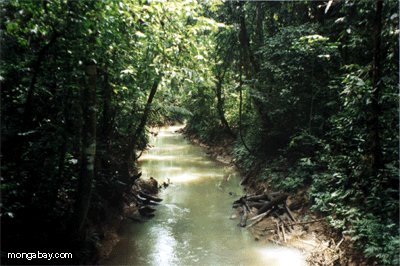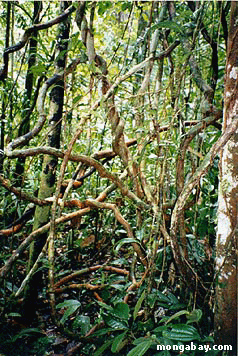Pictures from Peru
All images are the property of Rhett Butler, copyright 1995.
Contact me regarding use and reproduction.
Rainforest report for Peru - from the late 1990s Library of Congress: Peru Inca Society The Cultivation Genius of the Inca Recommended travel guides on Peru Recommended travel guides on Peru: 
Peru [Wikipedia]: Peru (Spanish: República del Perú) is a country in western South America, bordering Ecuador and Colombia to the north, Brazil to the east, Bolivia to the east, south-east and south, Chile to the south, and the Pacific Ocean to the west. Peru is rich in cultural anthropology, and is well-known as the cradle of the Inca empire. History: Before the Spanish arrived, Peru was home to various Pre-Inca cultures and later, to the Inca Empire. Francisco Pizarro landed on the Peruvian coast in 1532, and by the end of the 1530s Peru became a Viceroyalty and a major source of gold and silver for the Spanish Empire. Peru declared its independence from Spain on July 28, 1821 thanks to an alliance between the Argentine army of José de San Martín, and the Neogranadine Army of Simón Bolívar. Its first elected president, however, was not in power until 1827. From 1836 to 1839 Peru and Bolivia were united in the Peru-Bolivian Confederacy, dissolved only after an armed conflict with Chile and Argentina. Between these years, political unrest didn't fade away, with the Army as an important political force. Once again, between 1879 and 1883, Peru and Bolivia made an alliance and fought against Chile in the War of the Pacific. After the war (and with the loss of the province of Tarapacá), political stability was achieved, during the early years of the 1900s; until Augusto Leguía and his dictatorship arrived Geography: Peru is located in Western South America, bordering the Pacific Ocean, between Chile and Ecuador. It also shares borders with Colombia, Brazil and Bolivia. The western coastal plains (costa) are separated from the eastern lowland jungle of the Amazon Basin (selva) by the high and rugged Andes in the center (sierra). On the border with Bolivia lies Lake Titicaca, the world's highest navigable lake at 3821 m. A land rich in cultural heritage and a variety of natural environments, harbors 84 of the 118 known life zones of the earth. Economy: The Peruvian economy has become increasingly market oriented, with major privatizations completed since 1990; in the mining, electricity, and telecommunications industries. Thanks to strong foreign investment and the cooperation between the Fujimori government the IMF and the World Bank, growth was strong in 1994–97 and inflation was brought under control. In 1998, El Niño's impact on agriculture, the financial crisis in Asia, and instability in Brazilian markets undercut growth. And 1999 was another lean year for Peru, with the aftermath of El Niño and the Asian financial crisis working its way through the economy. Lima did manage to complete negotiations for an Extended Fund Facility with the IMF in June 1999, although it subsequently had to renegotiate the targets. Pressure on spending grew in the run-up to the 2000 elections. Growth up to 2004 has been driven by construction, investment, domestic demand, and exports to different world regions. Peru's economy is one of the better-managed in Latin America. Over the next few years, the country is likely to attract both domestic and foreign investment in the tourism, agriculture, mining, petroleum and natural gas, and power industries. Articles involving tourism in Peru: |
















